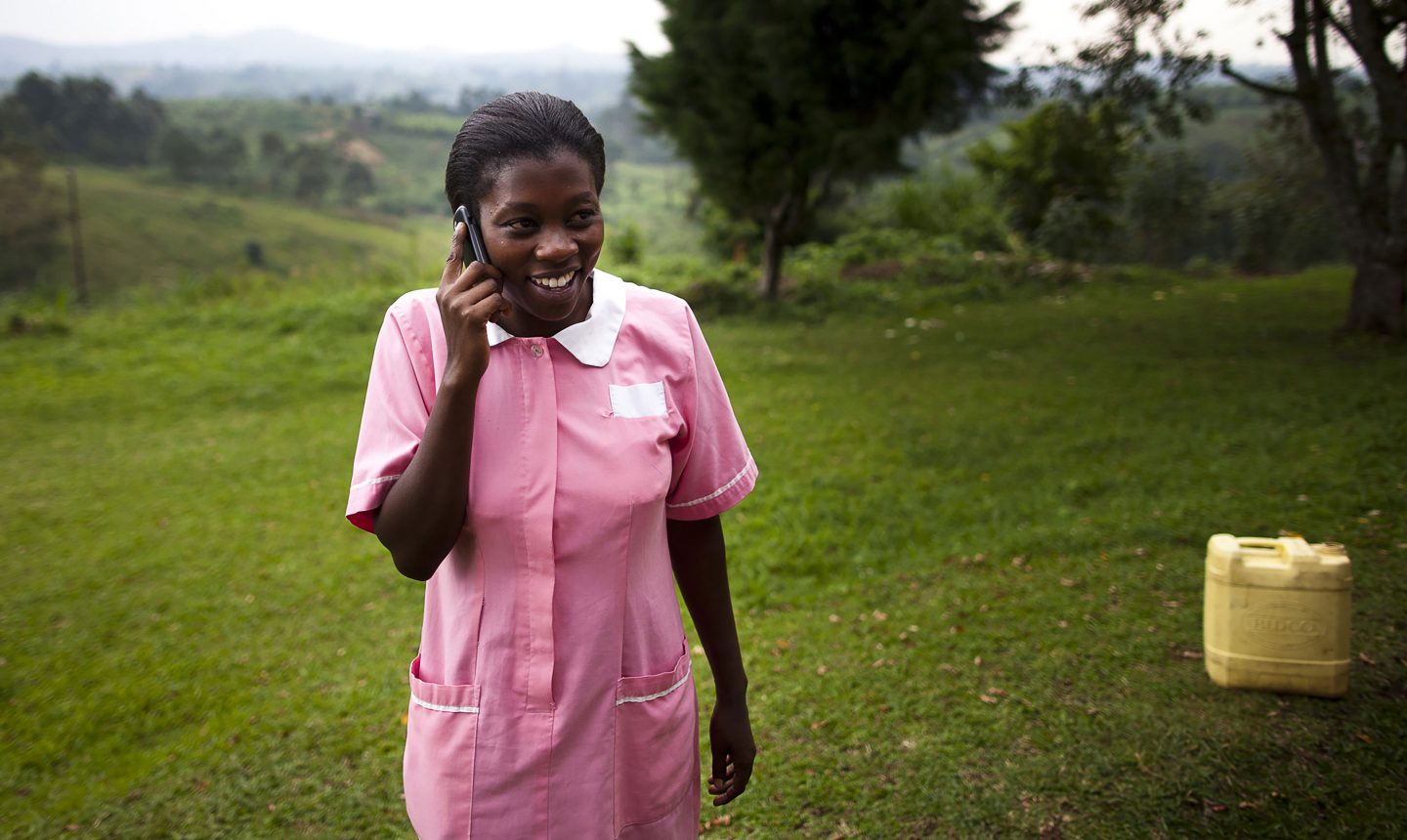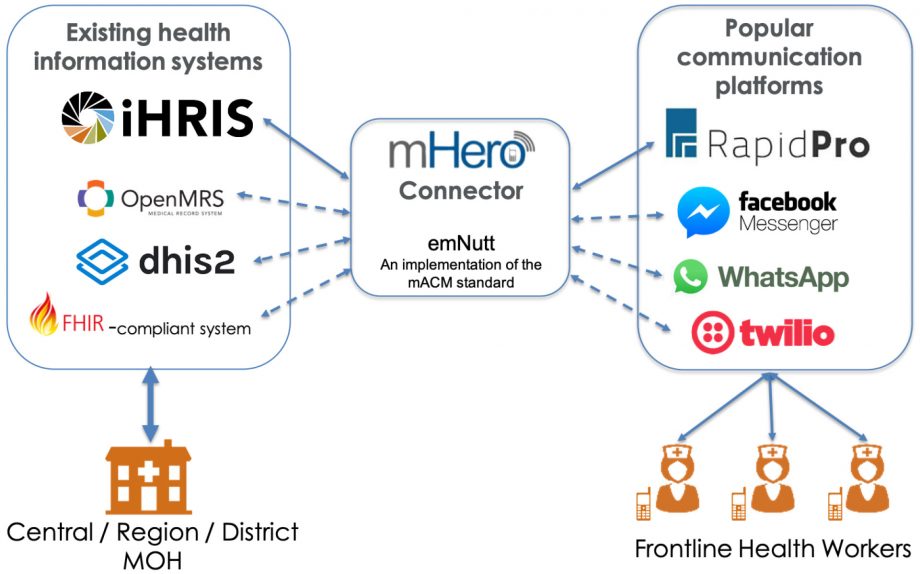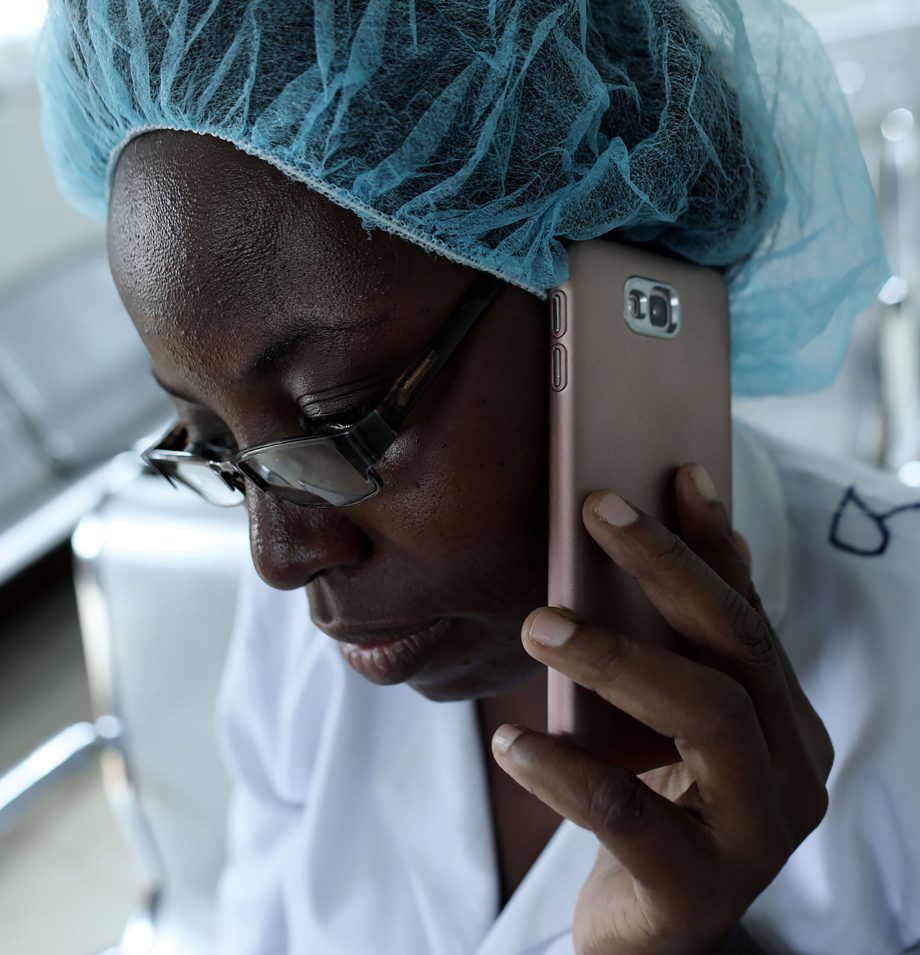
Systematizing communication channels to support health messaging needs in West Africa and beyond
- LocationWest Africa
- Implementation2014-2021
During a health crisis, health workers need the most up-to-date information about how to care for patients and health officials need real-time access to reports of the conditions across the country. During West Africa’s outbreaks of Ebola in 2014 and COVID-19 in 2020, mHero provided just that.
In August 2014, during the largest outbreak of Ebola, there were about 2,000 reported cases in West African countries. Health sectors were overwhelmed, and health officials had no way of reaching health workers in real-time with critical, lifesaving information. This same challenge arose in other countries as they quickly needed to respond to the COVID global pandemic.
Systematized communication is just as necessary outside of a health emergency context. This system has been used outside of health crises for use cases such as announcements, knowledge checks after training, routine data collection, disease surveillance, and refreshers of key messages.
IntraHealth International. (2017). mHero History. mHero.org. https://www.mhero.org/mhero-origins
mHero
Jembi Health Systems
IntraHealth International
UNICEF
ThoughtWorks
iHRIS
DHIS2
RapidPro
The Impact
-
Liberia
Since 2014, mHero, using an OpenHIE based architecture, has been deployed in Liberia continuously—reaching around 10,000 health workers
-
Kenya
Since September 2020, mHero has been deployed in Kenya – reaching around 20,000 health workers
-
Uganda
In March 2020, mHero was deployed in Uganda to facilitate syncing between systems and will soon be using mHero for messaging with around 25,000 UNICEF-supported community health workers
-
DRC
mHero is close to being deployed in the Democractic Republic of Congo and will reach 31,000 health workers in the Kinshasa area


Too much complexity
In order to connect multiple systems and data sources, the mHero architecture was initially more complex and this became challenging for Ministries’ systems administrators. The recent updates to mHero have made the architecture simpler and the installation and configuration have been streamlined.
The Approach
mHero, a communication channel solution, facilitates instantaneous two-way communication between ministries of health and health workers, which has been a crucial tool in supporting a coordinated response during a health crisis. It draws upon contact information and other details about health workers that are contained in iHRIS so that messages or message flows can be sent to targeted groups of health workers or all health workers in a country, even cross-sector. mHero supported by the OpenHIE Architecture and IHE standards addresses the need for real-time information exchange between ministries of health and all health workers for the purposes of general health sector communication as well as coordination of the response to a health emergency.
During the 2014 Ebola outbreak, staff from the UNICEF Innovation Lab in Kampala, Uganda hosted a hackathon with their teams, IntraHealth International, Jembi Health Systems, and ThoughtWorks to develop the platform with the goal of creating use components out of the OpenHIE architecture to link several software systems together.
At the hackathon, developers were able to link data from three separate systems (iHRIS, DHIS2, and RapidPro) to prove the concept. Because they used the open data exchange standards from OpenHIE, the model they developed was readily replicable in multiple countries and contexts. mHero was developed from this hackathon and deployed soon after. Liberia was able to utilize mHero at scale to coordinate the national response to Ebola and it was identified in the national plan for rebuilding the health sector post-crisis.
A new version of mHero was developed between November 2019 and February 2020 and has been deployed for COVID-19 response in several countries including Kenya, Uganda, and DRC since March 2020. This version of mHero is based on FHIR standard and is interoperable with other FHIR-based tools and systems. Additionally, the interface is updated, there are many new features, and the team has added many new reports for understanding the massive amount of data that comes from frequent sending and receiving messages at a large scale.
IntraHealth International. (2017). mHero History. mHero.org. https://www.mhero.org/mhero-origins
All photos copyright IntraHealth International.
-
OHIE Capabilities
- Health worker and patient alerting
- Disease surveillance and reporting
- Tracking and managing health worker capabilities and geographic coverage
- Health product logistics/supply chain support and tracking
- Health terminology and metadata management
- Exchange of lab requests and results
-
Health Issues Addressed
- Population and Public Health – Infectious disease surveillance, reporting, and management
- Healthcare Administration – Health workers
- Healthcare Administration – Health medicine and supplies
-
Terminology Standards
- FHIR
- LOINC
- ICD-10
- ICD-11
- SNOMED